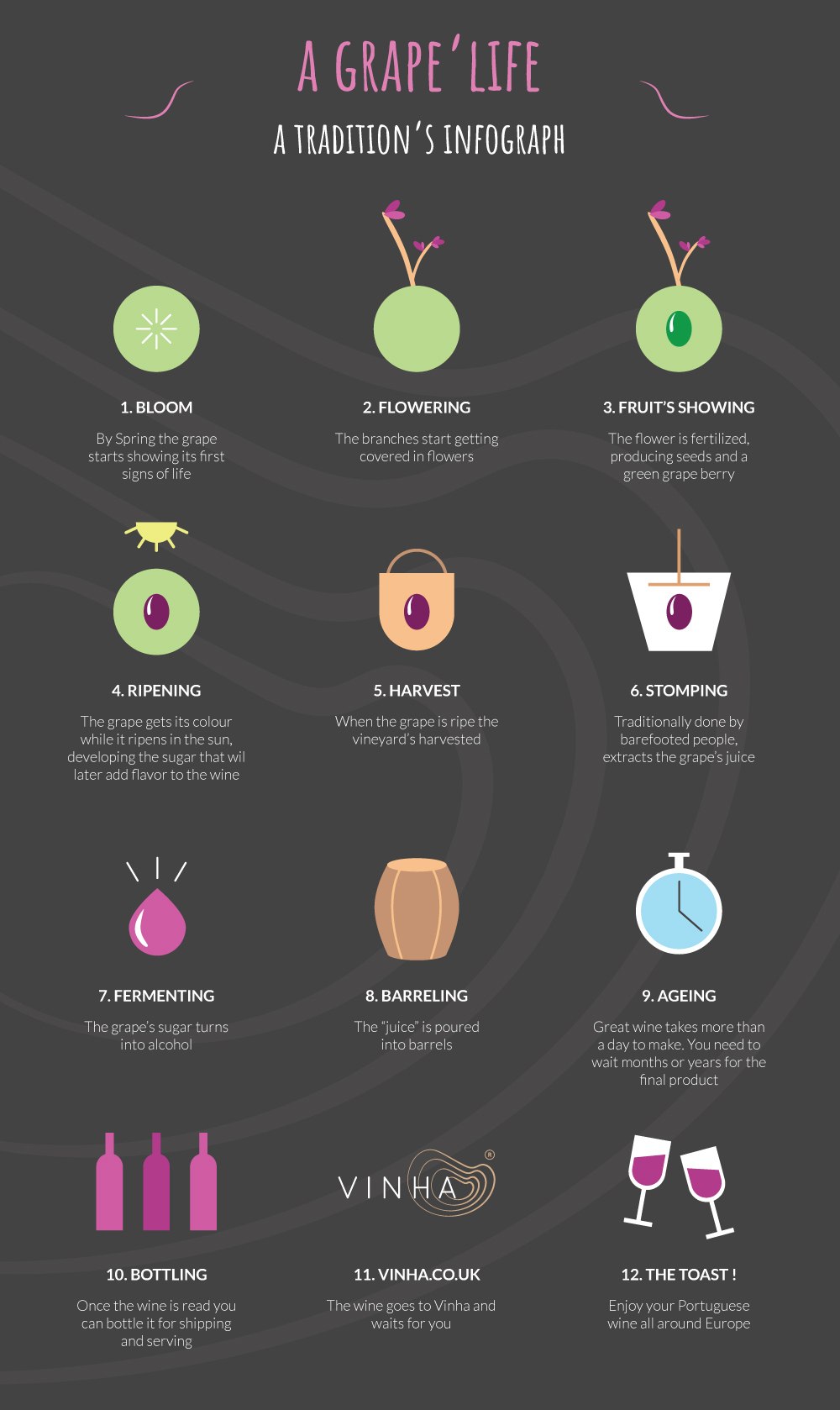
Summer is coming to its end and in Portugal “vindimas” season is officially starting: the grapes are ready to be picked from the vines – a job done in a celebratory and festive mood, to then produce this year’s wine
What are Vindimas after all?
Vindimas are a very specific and singular time of year in Portugal that embraces everything involved with winemaking, from grape harvesting to wine production.
What’s the best time for the Vindimas?
After the january pruning, the first bunches start forming in Spring, and during summer, the grapes get their color, scent and taste. From September to October, when the grapes are already ripe – with weight, color and acidity in ideal state for wine production – the harvesting will happen.
Despite the numerous new techniques, it is still possible to determine the best time to harvest using one simple and traditional method: when the stalk starts withering and the grape’s skin starts pruning up it is time to harvest.
It is up to winemakers to determine the more suitable Vindimas date according to caste and type of wine they will make.
The tradition that lasts
Once the harvest date is set, a group of people from nearby lands gathers and it is then initiated one of the most typical moments of portuguese ethnograph. It is not uncommon to see entire families head to the Vindimas together, as it is a tradition that crosses generations.
The bunches are harvested, either hand picked or using scissors for help for a faster cut. According to tradition, the stomping of the grapes can still be done in a more rustic fashion (people stomping the grapes with their bare feet), even though there are machines that can do it. In fact, the first 4 hours of the grape stomping are very important and need to be perfectly synchronized between the stompers.
In the winehouse, the grapes are deposited in a starling (a high capacity bucket) and/or selected from a conveyor belt. Next, the grapes are disentangled (removing the grapes from the bunch) and squashed. The must is then fermented and turned into alcohol. In the end of the fermentation process the wine is the stored in wood, cement or stainless steel until it is ready for consumption. After that it is bottle, shipped, and finally, toasted!
Vindimas in the old days
In the past, the harvest was seen as an authentic moment of celebration and gathering among families and friends. Everyone gathered and pulled their pants and shorts up, locked arms in a circle and stomped the grapes harvested earlier to the beat of folkloric ranch music.
Vindimas today
Although it doesn’t have the festive outlines of the olden days, the harvest still bring gathering and socialization to the work being done. Grapes are still picked by hand, even though there are already many mechanical processes to make grapes into wine
Currently, there is an effort to maintain this tradition alive, because the Vindimas are essential to assure the production of the already famous portuguese wine. Above all else, they’re days of outdoor activity away from the stress and hubbub of the big city, in the best company, and that’s something many people eagerly await every year.
Vindimas from North to South
Although it is an activity native to the North of the country – specifically in the Douro region – the matter of fact is that Vindimas are also done in other regions of the country. The different regions thusly contribute to the farming of different castes and, consequently, different wines, increasing the already rich canon of high-quality portuguese wines.
Regardless of the region, Vindimas are an important event on the yearly harvest calendar and a day full of conviviality and celebration. The only thing that’s left is to wait for the S. Martinho, in November, so that, along with a plate of steaming chestnuts, you can serve and taste the new wines.

